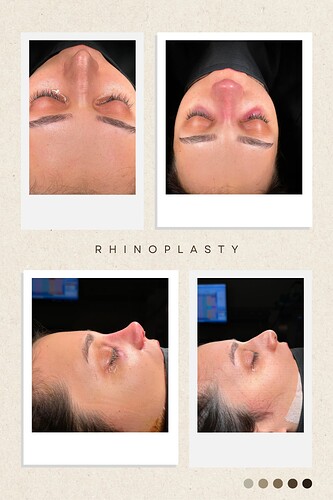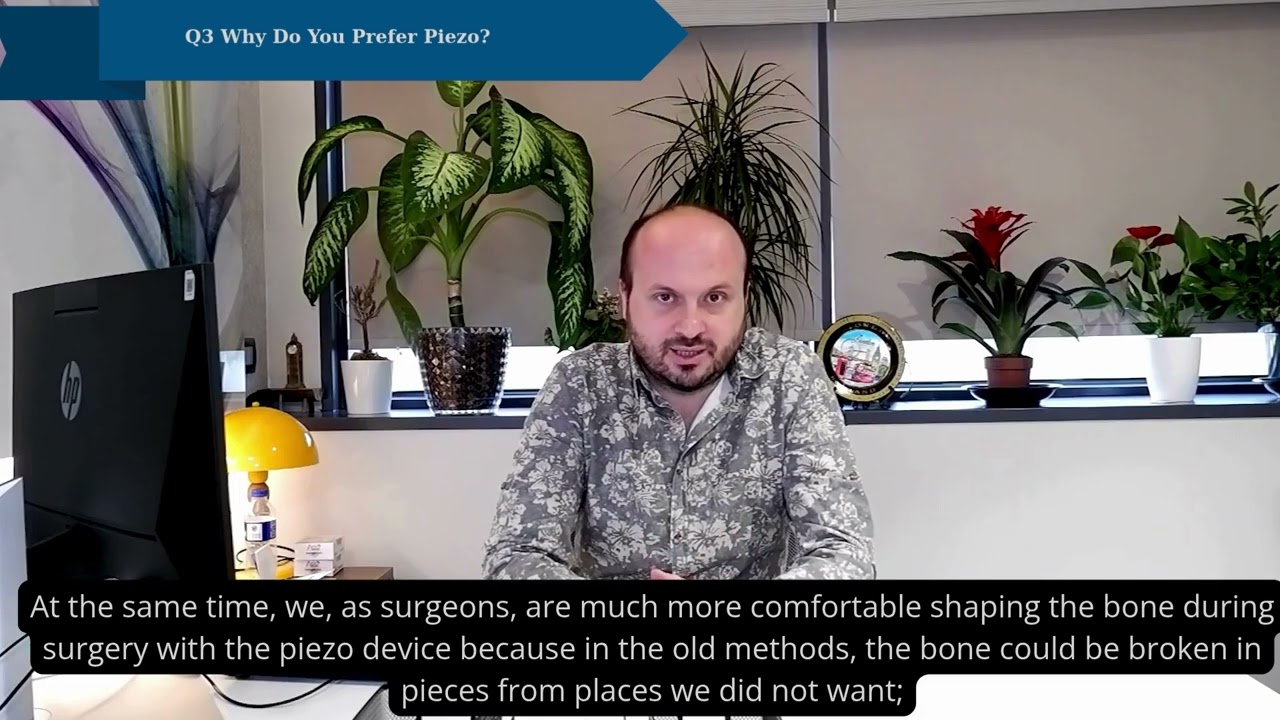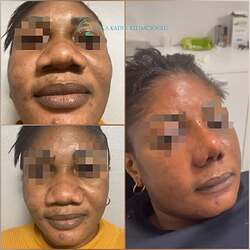 Best Rhinoplasty Surgeons in Turkey by Nose Type | Barbie, Natural, Revision & Ethnic Nose Jobs
Best Rhinoplasty Surgeons in Turkey by Nose Type | Barbie, Natural, Revision & Ethnic Nose Jobs  :türkiye:
:türkiye:
If you’re researching rhinoplasty in Turkey, one of the most important things to understand is this:
![]() There’s no such thing as “the best surgeon for everyone.” What matters most is choosing the right surgeon for your specific nose type and surgical needs.
There’s no such thing as “the best surgeon for everyone.” What matters most is choosing the right surgeon for your specific nose type and surgical needs.
Different types of noses — such as Barbie-style, natural primary, revision, Asian, or African-American rhinoplasty — require different techniques, aesthetics, and experience levels. And not every surgeon is trained in all of them.
This post introduces 5 of the most frequently recommended rhinoplasty specialists in Turkey, each known for a different expertise. All of them:
![]() Have operated at JCI-accredited hospitals
Have operated at JCI-accredited hospitals
![]() Are not listed in any major botched surgeon databases
Are not listed in any major botched surgeon databases
![]() Have high patient satisfaction and verifiable track records
Have high patient satisfaction and verifiable track records
### ![]() 1. Dr. Barkın Yavuz – Barbie & Natural Primary Rhinoplasty - Instagram Address: Instagram.com/barkinyavuzrhinoplasty
1. Dr. Barkın Yavuz – Barbie & Natural Primary Rhinoplasty - Instagram Address: Instagram.com/barkinyavuzrhinoplasty
![]() Istanbul |
Istanbul | ![]() Medipol Bahçelievler (JCI-accredited)
Medipol Bahçelievler (JCI-accredited)
Dr. Barkın Yavuz is one of the go-to names in Turkey for women wanting a Barbie nose, as well as those who prefer natural, subtle refinements. He is known for delivering feminine results with soft, defined contours — ideal for first-time (primary) rhinoplasty patients.
His patients report high satisfaction across multiple platforms, and he maintains a 5-star Google rating with no known malpractice or botched cases.
Perfect for: ![]() “I want a cute, feminine nose — but nothing too fake.”
“I want a cute, feminine nose — but nothing too fake.”
 2. Dr. Tuğçe Şimşek – Revision Rhinoplasty Specialist
2. Dr. Tuğçe Şimşek – Revision Rhinoplasty Specialist
![]() Istanbul
Istanbul
If you’ve had a previous rhinoplasty (in Turkey or elsewhere) and are unhappy with the outcome, revision surgery is an entirely different ballgame. Dr. Tuğçe Şimşek is one of the few female ENT surgeons in Turkey with a strong reputation for complex revision rhinoplasty.
She’s known for being honest about expectations and works frequently on cartilage reconstruction and breathing correction in revision cases.
Perfect for: ![]() “I had a botched result and need it fixed — properly this time.”
“I had a botched result and need it fixed — properly this time.”
 3. Dr. Kadir Kilimcioğlu – African-American & Ethnic Nose Jobs
3. Dr. Kadir Kilimcioğlu – African-American & Ethnic Nose Jobs
![]() Istanbul
Istanbul
Not all noses are created equal — and that’s especially true for patients of African descent. Dr. Kadir Kilimcioğlu is often recommended in forums and patient groups for his experience with ethnic rhinoplasty, particularly African-American and Middle Eastern noses.
He takes care to maintain ethnic harmony while improving both function and form.
Perfect for: ![]() “I want to refine my nose without losing my ethnic features.”
“I want to refine my nose without losing my ethnic features.”
 4. Dr. Yakup Avşar – Asian Rhinoplasty Expert
4. Dr. Yakup Avşar – Asian Rhinoplasty Expert
![]() Istanbul
Istanbul
Asian noses often require advanced techniques like augmentation rhinoplasty, dorsal support, and tip projection. Dr. Yakup Avşar has been featured internationally for his work on Asian facial structures and is known for using 3D imaging and custom grafts.
Patients from East and Southeast Asia frequently choose him for tailored, natural-looking results.
Perfect for: ![]() “I’m looking for someone who understands the structure of Asian noses.”
“I’m looking for someone who understands the structure of Asian noses.”
 What to Expect During Your Rhinoplasty Surgery in Turkey: A Step-by-Step Guide :türkiye:
What to Expect During Your Rhinoplasty Surgery in Turkey: A Step-by-Step Guide :türkiye:
Rhinoplasty, commonly known as nose surgery, is a transformative procedure that can enhance the appearance of your nose and improve breathing. If you’re considering rhinoplasty in Turkey, understanding the step-by-step process—from consultation to post-surgery recovery—will help you prepare and ensure a smooth experience. Turkey has become a popular destination for rhinoplasty due to its experienced surgeons, world-class clinics, and affordable prices. This guide will walk you through what to expect during your rhinoplasty surgery in Turkey.
1. Initial Consultation: Setting the Stage for Surgery
Before your rhinoplasty surgery in Turkey, you’ll undergo an initial consultation with your surgeon. This consultation is essential for discussing your aesthetic goals, evaluating your nose’s structure, and setting realistic expectations.
- Medical History: Your surgeon will ask about your medical history, including any allergies, past surgeries, or existing health conditions. This information helps them determine whether rhinoplasty is the right option for you and ensures your safety during surgery.
- Assessment of Your Nose: The surgeon will examine your nose, assess the bone and cartilage structure, and discuss areas that can be improved, such as the tip, bridge, or nostrils. If necessary, they may perform a breathing assessment to determine if a functional issue (such as a deviated septum) needs to be addressed alongside aesthetic changes.
- 3D Imaging or Simulation: Some clinics in Turkey offer 3D imaging or computer simulations to show you a preview of how your nose will look after the surgery. While simulations are not 100% accurate, they help give you a better visual understanding of the potential outcome.
- Discussion of Goals: You’ll discuss your goals for the surgery—whether you want a subtle enhancement or a more dramatic change. The surgeon will explain what can be realistically achieved based on your nose’s unique structure and your skin type.
- Surgical Plan: Based on the consultation, the surgeon will create a personalized surgical plan tailored to your goals. They’ll explain the specific surgical techniques they’ll use, whether it’s open or closed rhinoplasty, cartilage grafting, or septoplasty (if necessary).
2. Preparing for Surgery: Pre-Op Instructions
In preparation for your rhinoplasty surgery, your surgeon will provide you with specific pre-operative instructions to ensure a smooth procedure and recovery.
What to Expect:
- Medical Tests: Depending on your health history, you may need to undergo blood tests, an ECG (electrocardiogram), or a chest X-ray to assess your overall health and suitability for surgery.
- Dietary Restrictions: You will be advised to stop eating or drinking for a certain period (usually 8 hours) before surgery. This is essential to minimize the risk of complications during anesthesia.
- Medications: If you take any regular medications, your surgeon will advise you on whether to stop taking them before the surgery, especially blood-thinning medications like aspirin.
- Smoking and Alcohol: You will be asked to stop smoking and drinking alcohol at least two weeks before surgery. Smoking can interfere with healing, and alcohol can increase bleeding risks.
- Arranging Post-Surgery Care: Since rhinoplasty requires a few days of recovery, plan for someone to accompany you during your stay in Turkey and assist you during the first few days after surgery.
3. The Day of Surgery: What Happens Before, During, and After
On the day of your rhinoplasty surgery, you will be carefully guided through the process by your surgeon and the medical team. Here’s what to expect:
Before Surgery:
- Arrival at the Clinic: Upon arriving at the clinic or hospital, you’ll be asked to change into a surgical gown. Your medical team will go over the surgical plan once again and ensure that you’re comfortable and ready for the procedure.
- Anesthesia Consultation: A qualified anesthesiologist will meet with you to discuss your anesthesia options. Most rhinoplasty surgeries are performed under general anesthesia, which means you will be asleep throughout the procedure.
- Marking the Surgical Site: The surgeon will mark the areas of your nose that will be altered. This ensures precision during the surgery and helps you visualize the planned changes.
During Surgery:
- Anesthesia and Sedation: Once you are under general anesthesia, you will be asleep and pain-free throughout the procedure. The anesthesiologist will continuously monitor your vital signs to ensure your safety.
- Surgical Procedure: Rhinoplasty surgery typically lasts between 1 to 3 hours, depending on the complexity of the procedure. There are two main types of rhinoplasty:
- Closed Rhinoplasty: This technique involves making incisions inside the nostrils, leaving no visible external scars. It’s typically used for less extensive reshaping.
- Open Rhinoplasty: In this technique, the surgeon makes a small incision on the underside of the nose, between the nostrils, to gain better access to the internal structures. This is often used for more complex cases, such as correcting a wide nose or refining the tip.During the procedure, the surgeon will reshape the bone and cartilage to achieve the desired result. If necessary, cartilage grafts may be used to add structure or support.
After Surgery:
- Recovery Room: Once the surgery is complete, you will be moved to a recovery room where medical staff will monitor your vital signs and ensure you are waking up from anesthesia safely. You may experience some discomfort, swelling, or drowsiness, which is normal.
- Post-Op Monitoring: You will stay in the clinic or hospital for a short period, usually a day or two, to ensure that you’re recovering well and there are no complications. The medical team will check for signs of infection, bleeding, or any issues with the healing process.
- Pain Management: You may experience some pain or discomfort, especially in the first 24-48 hours. The surgeon will prescribe pain medication to help manage any discomfort and ensure a smooth recovery.
4. Recovery After Rhinoplasty: What to Expect During Your Stay in Turkey
Your recovery begins immediately after the surgery, and during the first few days, you will be monitored to ensure you’re healing properly. Here’s what to expect during your recovery period in Turkey:
What to Expect:
- Swelling and Bruising: Swelling is common after rhinoplasty, and you can expect some bruising around the eyes and nose. This usually peaks within the first 48 hours and then begins to subside. Cold compresses and prescribed medications can help reduce swelling.
- Nasal Packing: In some cases, the surgeon may place temporary packing inside the nostrils to support the nasal structures. This will be removed during your follow-up visit, typically within a few days after surgery.
- Activity Restrictions: For the first few days, you’ll need to rest and avoid physical activities that could strain your body. Avoid bending down, heavy lifting, or any activities that might put pressure on your nose.
- Follow-Up Visits: A follow-up visit will be scheduled within 1-2 days after surgery to remove any nasal packing, check for infections, and assess your progress. You will also receive instructions on caring for your nose as it heals.
5. Returning Home and Long-Term Recovery
After a few days of rest in Turkey, most patients are ready to return home. However, recovery continues for several weeks.
What to Expect:
- First Week: Swelling and bruising may still be noticeable, but they should start to subside after the first week. You’ll need to avoid any strenuous activities and follow the surgeon’s instructions regarding nose care.
- Final Results: While you’ll start to see the changes in your nose within a few weeks, full results may take up to a year to fully manifest. The swelling will gradually subside, and your nose will settle into its new shape over time.
- Follow-Up Appointments: You may need to visit your local healthcare provider or arrange virtual follow-ups with your Turkish surgeon to monitor your progress and ensure a smooth healing process.
6. Conclusion: A Smooth Rhinoplasty Journey in Turkey
Rhinoplasty surgery in Turkey is a safe and effective way to enhance the appearance and function of your nose. By understanding the step-by-step process, from consultation to recovery, you can feel confident and prepared for your rhinoplasty journey. Turkey’s world-class surgeons, modern clinics, and affordable pricing make it a top destination for rhinoplasty, ensuring you receive excellent care and achieve beautiful results.
If you want to explore the surgeon database document here is a link for it!


